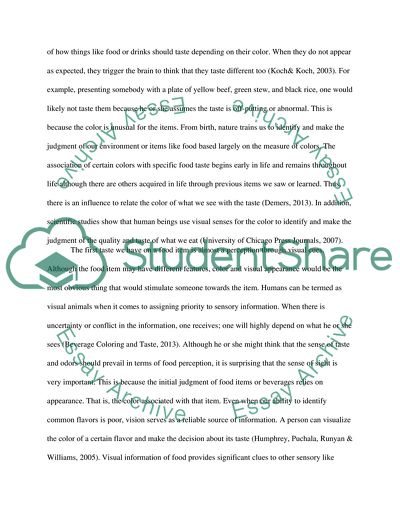Cite this document
(“Tasting Color: The Effects Color Have on Taste Research Paper”, n.d.)
Retrieved from https://studentshare.org/psychology/1697534-tasting-color-the-effects-color-have-on-taste
Retrieved from https://studentshare.org/psychology/1697534-tasting-color-the-effects-color-have-on-taste
(Tasting Color: The Effects Color Have on Taste Research Paper)
https://studentshare.org/psychology/1697534-tasting-color-the-effects-color-have-on-taste.
https://studentshare.org/psychology/1697534-tasting-color-the-effects-color-have-on-taste.
“Tasting Color: The Effects Color Have on Taste Research Paper”, n.d. https://studentshare.org/psychology/1697534-tasting-color-the-effects-color-have-on-taste.


